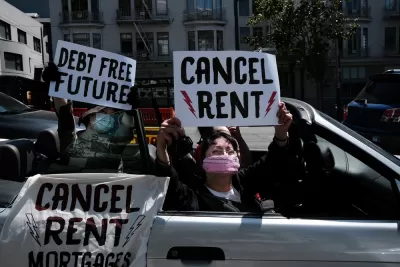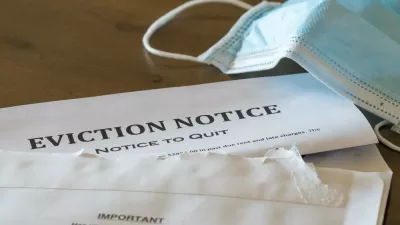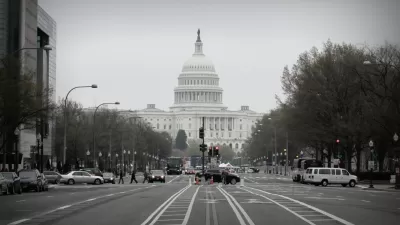Checking in with the numerous risks in the housing market as the economic fallout of the pandemic as approaches it approaches its second year.

New research by Mary K. Cunningham, Ananya Hariharan, and Olivia Fiol at the Urban Institute quantifies the eviction cliff looming over the country as the Centers for Disease Control and Prevention's federal eviction moratorium is scheduled to expire at the end of January.
In this brief, we use new data from the second wave of the Urban Institute’s Coronavirus Tracking Survey, conducted September 11 through 28, 2020, to explore the pandemic’s impact on housing stability and renters’ vulnerability to eviction. We find that nearly 14 percent of renters, or 9.5 million renters, reported problems paying rent in the previous 30 days.
The report also adds more evidence to describe the many ways in which low-income and communities of color are facing disparate impacts during the pandemic. "More than one in four renters worried about being able to pay rent in the next month. Almost one in two Hispanic/Latinx renters and more than one in four Black renters were worried about paying next month’s rent," according to Cunningham, Hariharan, and Fiol. "Black and Hispanic/Latinx renters were more likely than white renters to have received an eviction notice or been threatened with eviction since March."
The abstract for the brief notes that housing insecurity is also a public health risk during the pandemic, backing up research published at the end of 2020 that connected evictions with 433,700 excess coronavirus infections.
The question of how effective the nation's patchwork of eviction protections have been during the pandemic has also been the subject of recent media and academic scrutiny. Researchers at the Kinder Institute in Houston recently used the "Cost of Eviction Calculator" created by the Innovation for Justice Program at the University of Arizona James E. Rogers College of Law to calculate the cost of Evictions in Harris County, Texas.
Luis Guajardo reports the findings of that effort:
Last summer, Kinder Institute researchers estimated that evictions cost Harris County upwards of $240 million annually (pre-pandemic figures). We revisited the model using post-shutdown eviction data (since March 15, 2020) and estimate that during the pandemic, evictions have cost Harris County-area jurisdictions and nonprofits upwards of $100 million.
As noted, by Guajardo, that $100 million could have been spent on the public health response and economic stimulus, among other options. Some of these costs have been incurred by local policies that failed to support renters in economic distress during an unprecedented economic shock.
The CDC's moratorium hasn't been much help in Harris County, which has forgone the supporting services and legislation put in place in other local jurisdictions. In another article examining the Harris County case study, Jen Rice cites data from January Advisors that estimates the percentage of evictions prevented by the CDC's moratorium to equal a paltry 9.3 percent. "That means 9,386 evictions were not stopped by the order, out of a total 10,383 eviction cases heard in Harris County since September," writes Rice.
Both Guajardo and Rice offer Austin, in Travis County, as an example for Harris County to emulate in reducing housing stress. One way to prevent evictions and the social and health risk that follows can be as simple as offering a grace period, according to both articles.
Finally, another new study by the Los Angeles-baed Economic Roundtable calculates the number of people likely to become homeless in California and the nation. Doug Smith reports:
Based on the effects of the 2008 recession, the Economic Roundtable report “Locked Out” concludes that pandemic-related unemployment will start a brutal cycle of homelessness. It says the uptick began as a trickle in 2020, but will triple this year and peak by 2023.
Here's how the numbers will look by 2023:
…the number of additional working-age adults with no place of their own to sleep will reach more than 52,000 in Los Angeles County, 131,000 in California and 600,000 across the nation, it said. The most recent federal estimate, for 2019, estimated there were 568,000 homeless people nationally and 129,000 in California. The 2020 count for Los Angeles County put the number at just over 66,000, meaning the projection is for a near doubling.
According to the study, the worst economic effects will be felt by people with jobs in sectors most impacted by the pandemic—" retail stores, restaurants and bars, clerical jobs, child care, personal care and, surprisingly, in nonprofit institutions."
Whatever the solution for the eviction crisis, in Harris County and elsewhere in the country, it's not likely to come from the economic stimulus package approved by Congress and the president at the end of 2020. While the COVID-19 Emergency Relief Act of 2020 includes $25 billion in economic relief for renters, the money doesn't address rent debt incurred since the pandemic began, nor did it provide financial relief to the state and local governments on the frontlines of the economic downturn, barely gripping the edges of a social safety net growing more tattered with every passing day, week, and month in this pandemic.
While it might seem like the country has avoided some of the gloomy projections about the evictions, homelessness, and foreclosures that seemed possible at the beginning of the year, the reality of the crisis is far from stable. The worst effects of the economic downturn on the housing market are still highly plausible, and it's already been a terrible and tragic year for many Americans struggling outside the fickle limelight.

Maui's Vacation Rental Debate Turns Ugly
Verbal attacks, misinformation campaigns and fistfights plague a high-stakes debate to convert thousands of vacation rentals into long-term housing.

Planetizen Federal Action Tracker
A weekly monitor of how Trump’s orders and actions are impacting planners and planning in America.

In Urban Planning, AI Prompting Could be the New Design Thinking
Creativity has long been key to great urban design. What if we see AI as our new creative partner?

King County Supportive Housing Program Offers Hope for Unhoused Residents
The county is taking a ‘Housing First’ approach that prioritizes getting people into housing, then offering wraparound supportive services.

Researchers Use AI to Get Clearer Picture of US Housing
Analysts are using artificial intelligence to supercharge their research by allowing them to comb through data faster. Though these AI tools can be error prone, they save time and housing researchers are optimistic about the future.

Making Shared Micromobility More Inclusive
Cities and shared mobility system operators can do more to include people with disabilities in planning and operations, per a new report.
Urban Design for Planners 1: Software Tools
This six-course series explores essential urban design concepts using open source software and equips planners with the tools they need to participate fully in the urban design process.
Planning for Universal Design
Learn the tools for implementing Universal Design in planning regulations.
planning NEXT
Appalachian Highlands Housing Partners
Mpact (founded as Rail~Volution)
City of Camden Redevelopment Agency
City of Astoria
City of Portland
City of Laramie






























